You can easily eat seaweed every day by making it a part of your normal meals or as a garnish, a salty flavoring, or even as a part of the recipe in such as way that no one would ever know that you’re eating seaweed.
The way I prefer to do this is to add sea moss gel to my:
- Coffee in the morning
- Smoothies during the day
- Dips like hummus and baba ganoush
- Raw cakes like the amazing Red Velvet cake you’ll find here, which is a great treat served with
- Chai with a dash of honey at night
Depending on how active you are in the nutrition space, seaweed may seem to have popped up out of nowhere for you. Or, you’ve seen the emergence of the ocean to a plate of this valuable, nutrient-dense, Superfood.
Either way, I’m guessing it’s piqued your curiosity about how you can creatively work seaweed into your diet so you can eat seaweed every day.
You may be familiar with the more popular species of seaweed that you see in Asian cuisines. Wakame is often used in Miso Soup and Nori is the dried seaweed used to make Sushi.
But is that all there is to seaweed? Surely, with an estimated 35,000 species on the planet, there has to be more than just a couple of ways to eat it? The great news is that there is and you’re probably oblivious of it.
What Foods Contain Seaweed?
You probably are eating seaweed every day, in one form or another. So, is that a good thing?
Seaweed makes an appearance in all manner of foods, including:
- Ice Cream
- Cookies
- Beer (yes, there’s a Kelp Stout!)
- Sauces
- Meat
- Confectionery and more
How the seaweed is making its way into the foods you are eating is typically more important than what type, and how much seaweed you are eating daily.
There have been recent concerns with Carrageenan, which is extracted from specific seaweed species.
When we look at how you can eat seaweed every day to improve your physical and mental health, yes, these are real benefits, we are not talking about processed seaweed extracts.
We are talking about the whole food, as fresh and unprocessed as you can get it. Sun-dried is as far as the processing should go for it to still have true nutritional value.
As the global seaweed industry steps up its game there are several inconsistent projections as to the estimated value in the next 5 years.
Suffice it to say that more and more people are making seaweed a part of their diet each year.
Types of Seaweed
The species of seaweed that are making it to the table are more than just Nori, Kombu, and Wakame. Irish Sea Moss is becoming more of a part of daily consumption as one example.
Another seaweed that is being eaten daily for various health benefits is Bladderwrack. Seaweed is quickly moving away from simply being looked at as a delicacy and becoming a staple as it is increasingly referred to as the new Kale.
It’s not just Vegans who are embracing seaweed as a part of their daily intake.
Cultures and countries aside, people around the world are finding out about the numerous health benefits that come from the minerals and vitamins wrapped up in this marine gift from nature.
Did you know that the global production of seaweed for use in food is more than lemons and limes?
More and more research is being done on the health benefits of eating seaweed every day.
The number of studies in the past ten years has outweighed the number of studies in any time preceding them. We are certainly beginning to see the value in the vegetable harvests we have access to through our oceans.
Is it Safe to Eat Seaweed Everyday?
Like anything in life, moderation is the key. If you eat or drink too much of anything, you’re going to find out the hard way that it’s not a good thing to do.
Doctors have dealt with patients who have consumed far too much seaweed (including supplements) and suffered from excess iodine, or toxicity from heavy metals.
This has been rare, and the volume of seaweed has been extreme. A little each day is enough.
Did you know that Coriander (Cilantro) helps with flushing heavy metals out of the body? 1
You may recall the old saying…
“An apple a day keeps the Doctor away”
Well, seaweed is a lot like that. If you ate a whole bushel of apples in one sitting, you’ll feel pretty awful. So keep the consumption at a healthy level.
The average Japanese person eats between 5 grams and 10 grams of seaweed each day. This might not seem like a lot, but it is enough to get what you typically need.
Before adding seaweed to your diet, speak with your Dietitian to find out if you can eat seaweed every day.
I eat about the same amount daily, but I rarely eat Nori, Kombu or Wakame in that 5 to 10 grams. What I have each day is Irish Sea Moss.
Irish Moss seaweed was a staple for people during the Irish Potato Famine of 1845 to 1852. I make some recipes with sea moss gel that helps me to eat seaweed every day. My favourite is a Red Velvet Cake that I add sea moss gel to.
Minerals and Vitamins
Seaweed is loaded with valuable minerals and vitamins, which when in the right balance, provide for a much better quality of life through better health. Typically, seaweed is high in:
- Antioxidants
- Soluble fiber
- Insoluble fiber
- Iodine
- Iron
- Vitamin B 12
- Vitamin K, and
- Vitamin C
When you start to get more specific with the different species of seaweed, the vitamins and minerals can differ a little. Some have more than others. What’s amazing is that there are no terrestrial (land-based) vegetables that we have which even come close to what seaweed can give us.
One such compound that is not found in terrestrial vegetables is fucoidan, a sulphated polysaccharide that has antiviral and anticoagulant properties.
Fucoidan exists in the cell walls of specific seaweed species and has been suggested to potentially hold a solution to the cancer scourge. 2
I can’t help but wonder where any message that you should not eat seaweed every day comes from, particularly with potential cures through research like that.
Could that just be the cynical sarcastic side of me coming out because it’s unlikely that the message as a whole would be promoted by Big Pharma over a new wonder drug that costs cancer sufferers thousands of dollars?
Okay. Back to the point…
When you consider that in countries like Japan, there are generally lower rates of obesity, cancer, type 2 diabetes, and heart disease their diet is something that should be looked at.
Being lower in meat than other parts of the world, and higher in fruits, vegetables, fish and seaweed, it echoes the words of Hypocrites…
“Let thy food be thy medicine and thy medicine be thy food”
Variations in Vitamin and Mineral Content
Seaweed comes in thousands of species and can grow in almost every body of water on the planet.
That makes for a multitude of variations in the possible nutritional content of one seaweed to the next. For that reason, making seaweed a supplementary part of your diet, and not necessarily a main part of your diet, is a good idea.
You can buy (or make your own) seaweed foods such as seaweed spaghetti. But replacing your normal pasta-based spaghetti with seaweed-based spaghetti may mean that you are getting far too much iodine for a start.
Different Seaweeds to Eat Each Day
Arame
Some seaweeds, such as Arame (Eisenia Bicyclis) contain such high concentrations of iodine that within a few small grams you will have reached what is recognised at the tolerable upper limit for your day. 3
This seaweed can be slightly sweet to the taste and goes well with Edamame or Shiitake.
What you eat your seaweed with is just as important as how much seaweed you eat.
Earlier I shared with you that Coriander (Cilantro) helps to remove heavy metals from the body, well, if you look at the Japanese diet, where people eat seaweed every day.
They are also eating seaweed with other vegetables like cabbage, broccoli, mushrooms and soya. These naturally play a part in inhibiting the uptake of iodine into the body, particularly the thyroid gland.
Now that’s not to say you should avoid iodine. Not at all. You could find that you are lacking in iodine and have a deficiency. Part of that comes from the types of salt you are consuming.
If you are using iodized salt (common table salt), you’re likely to not be getting the other minerals that are found in Celtic sea salt, Himalayan salt, or other forms of mineral salts.
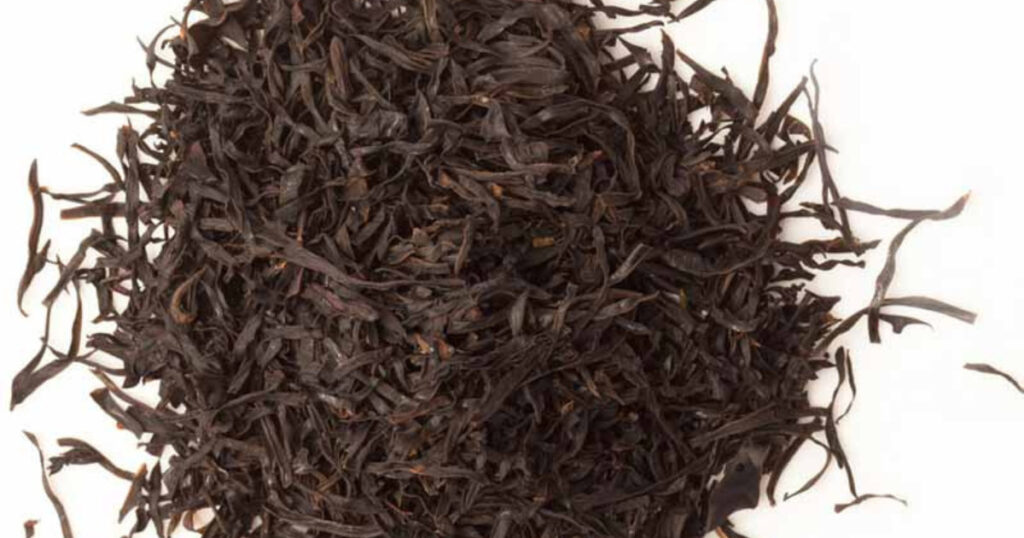
Dulse
Dulse (Palmaria Palmata) is a slightly transparent seaweed that has a reddish-purple colour to it. 4
When lightly pan fried it can have a bacon-like flavor to it, which may be why it has earned the nickname ‘the bacon of the sea’. As a dried seaweed it is often used as flakes to top soups and occasionally salads.
When looking for Dulse, much like when looking for Sea Moss, choose a brand that has done as little as possible to get it in the packet and off to the store. Dried is good, baked is not.
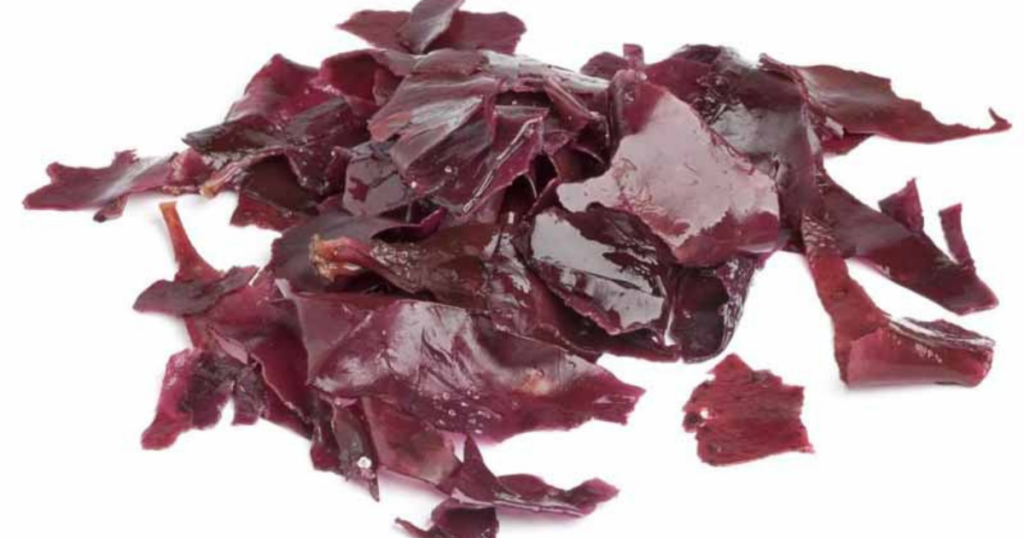
Wakame
Wakame (Undaria Pinnatifida) is still widely used in Japan to this day. With a history dating back to the Nara period of 710 to 794 AD, Wakame is often served in soups and salads. 5
It has a distinct and pleasant flavour. Wakame can expand as much as three times from its dried size when soaked in water.
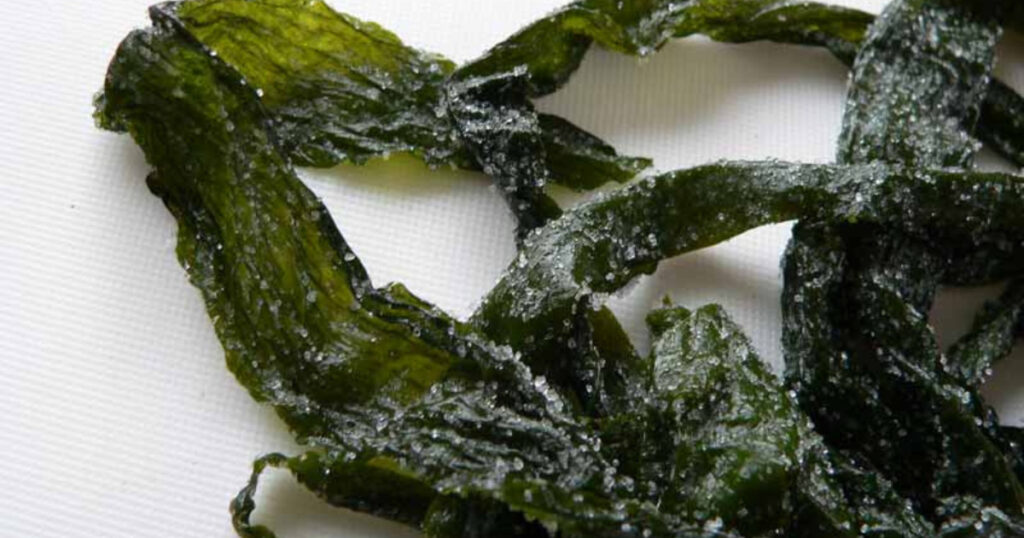
Kombu
Kombu (Saccharina Japonica or possibly one of a dozen other botanical names) is the natural source of umami. Umami is described as being one of the five fundamental flavours, along with sour, sweet, salty, and bitter. 6
If you are looking for a natural way to avoid using products such as MSG, you’ve found it. Add Kombu to your condiment list and your Dashi will be perfect.
Cooking black rice in Dashi allows for a unique spin on your meal. It is due to the position that Kombu holds its being the source of umami, and being packed with vitamins and minerals, that it has earned the name in Japanese culture as the ‘King of Seaweeds’
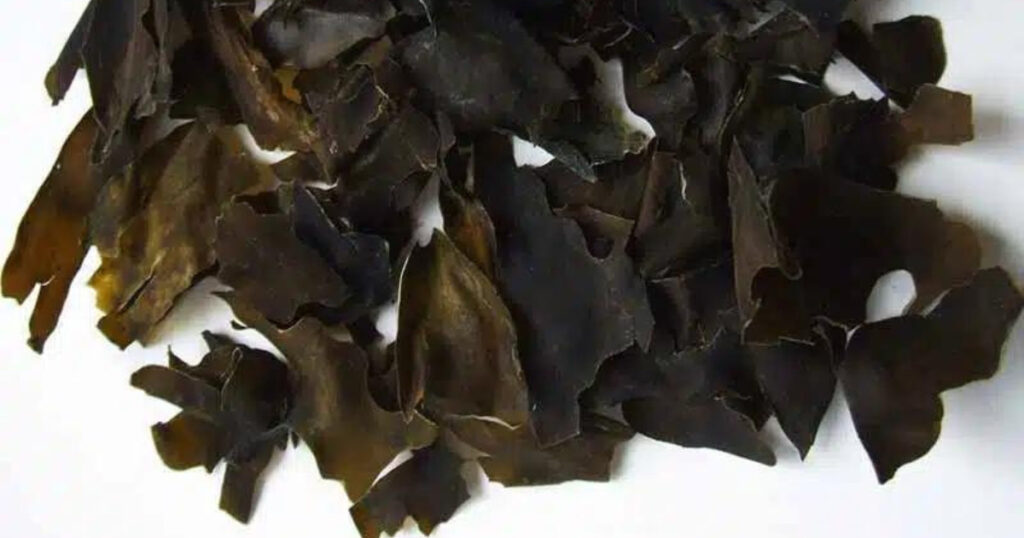
Nori
Nori (Pyropia Yezoensis or Pyropia Tenera) is the yummy seaweed that you’ll find wrapped around sushi, typically known by many as a California Roll. 7 8
It is processed into the thin dried sheets that are used for this purpose. Then shredded and spread out to dry, a lot like paper is. The first year of harvesting Nori is where the highest grade Nori is obtained.
Nori can also be eaten as a substitute for potato crisps (chips), but, keep in mind that there are still high concentrations of minerals and vitamins in Nori.
Unlike a bag of potato chips, eating a whole bag of Nori could leave you with an overload on your system that is less than pleasant.
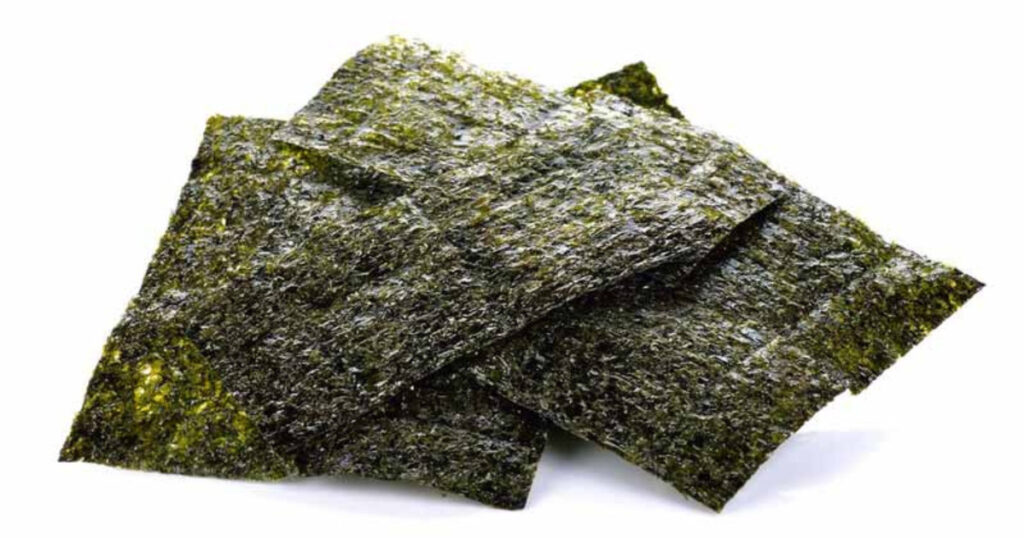
Irish Sea Moss
Irish Sea Moss (Chondrus Crispus) is my personal favourite. This is the top of my list, and if you want to eat seaweed every day, this is such an easy one to make a part of many meals. 9
After washing and soaking the Irish Moss in filtered water I can blend it into a paste or a gel that I then add to smoothies, raw cakes, salad dressings, or simply use topically.
Sea Moss is reported to contain a staggering 92 of the 102 minerals required for our bodies to stay healthy. As an addition to any diet, in moderation, this is sure to be a good thing.
Irish Moss has been attributed to a range of health benefits over the years and is consumed almost religiously in Jamaica.
There seems to be an element of confusion in the market about which species is truly Irish Sea Moss.
The species that is represented online and in the stores does not resemble dried or fresh Chondrus Crispus but looks more like Eucheuma Cottonii.
All the species that I have used in the past have been sold in this way, but they are not Chondrus Crispus. You’ll be able to see the difference between the two in the images below.
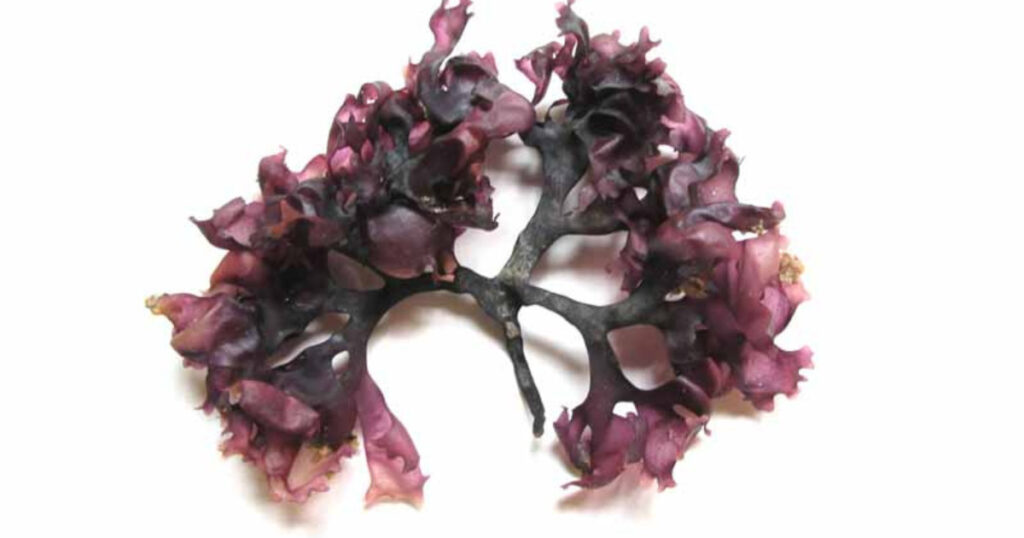
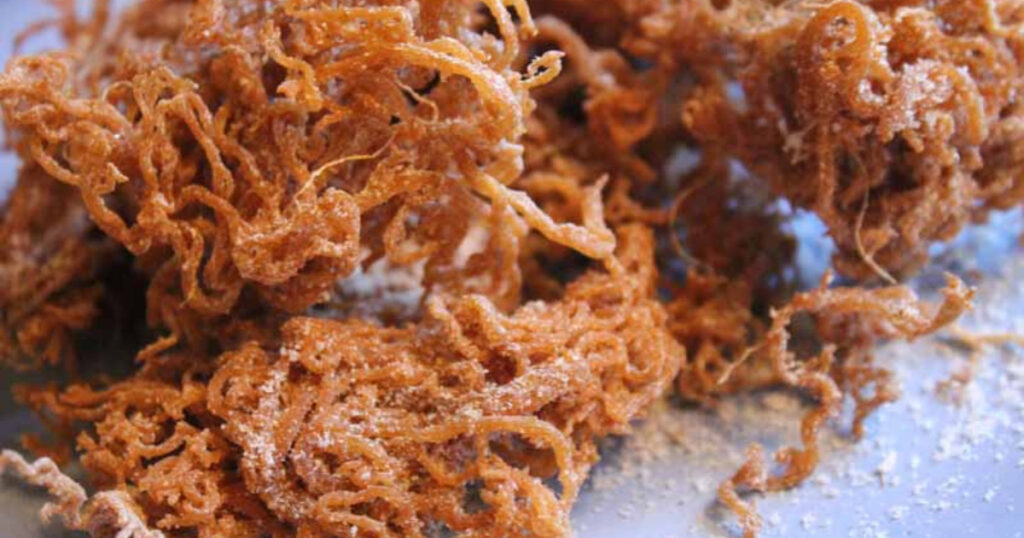
That being said, there are constant re-categorizations of species from one to the next within the seaweed world, and the situation is better explained on our Irish Moss page.
Hijiki
The last suggestion on the list of seaweeds you can try is Hijiki (Sargassum fusiforme) which possesses a very absorbent characteristic when it comes to the minerals and heavy metals around it. 10
There have been warnings made by health officials about eating Hijiki due to the dangerous levels of arsenic. But, this is indicative of where the seaweed has been cultivated or harvested from. 11
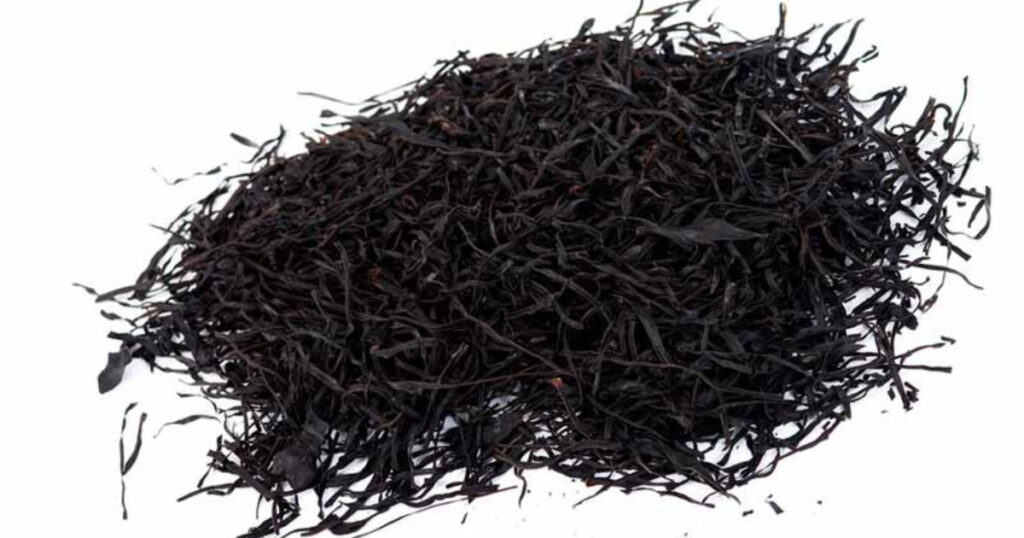
Before you consume any seaweed I would suggest that you find out about a chemical analysis of the species you intend to consume from the supplier.
That, and any other information that can be provided to give you confidence that it is cultivated using responsible and sustainable techniques which don’t present a threat to people, or the environment.
The best way to eat seaweed every day is to add small amounts to the foods you are already having. Don’t go overboard with it, and if you feel like something isn’t right, then stop and speak to your Dietitian. What have you added seaweed to in your day?
Reference
- “Chelation: Harnessing and Enhancing Heavy Metal Detoxification—A Review” – M. Sears, 18 April 2013 [PubMed Central] [Archive] ↩︎
- “Fucoidan and Cancer: A Multifunctional Molecule with Anti-Tumor Potential” – F. Atashrazm, R. Lowenthal, G. Woods, A. Holloway, J. Dickinson, 14 April 2015 [PubMed Central] [Archive] ↩︎
- “Eisenia bicyclis (Kjellman) Setchell, 1905” – WoRMS Staff, Last checked 5 March 2024 [WoRMS] [Archive] ↩︎
- “Palmaria palmata (Linnaeus) 1805” – F.Weber, D.Mohr, Last checked 5 March 2024 [WoRMS] [Archive] ↩︎
- “Undaria pinnatifida (Harvey) Suringar, 1873” – WoRMS Staff, Last checked 5 March 2024 [WoRMS] [Archive] ↩︎
- “Saccharina japonica (Areschoug)” – C. Lane, C. Mayes, W. Druehl, W. Saunders, Last checked 5 March 2024 [WoRMS] [Archive] ↩︎
- “Pyropia yezoensis (Ueda)” – M. Hwang, H. Choi, Last checked 5 March 2024 [WoRMS] [Archive] ↩︎
- “Pyropia tenera (Kjellman)” – N.Kikuchi, M.Miyata, M.S.Hwang & H.G.Choi, Last checked 5 March 2024 [WoRMS] [Archive] ↩︎
- “Chondrus crispus Stackhouse, 1797” – WoRMS Staff, Last checked 5 March 2024 [WoRMS] [Archive] ↩︎
- “Sargassum fusiforme (Harvey)” – WoRMS Staff, Last checked 5 March 2024 [WoRMS] [Archive] ↩︎
- “Concentrations and speciation of arsenic in New England seaweed species harvested for food and agriculture” – V. Taylor, B. Jackson, 10 August 2016 [PubMed Central] [Archive] ↩︎
Last Updated on 5 months by D&C Editorial Team
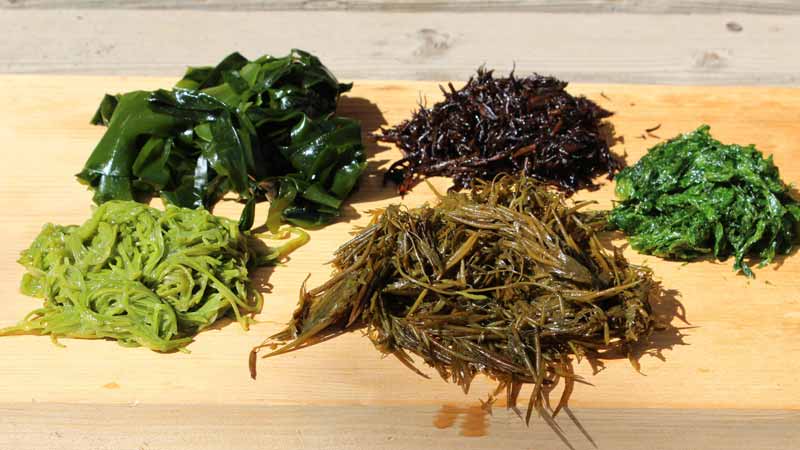
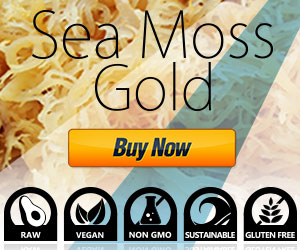



Hello. I want to know why you have Hijiki in your list of different seaweeds that you can eat everyday. If it is so full of heavy metals, wouldn’t that make it something to keep off the list?
Hello Carol,
Hijiki is a very commonly consumed seaweed, but that is more of a per capita thing than as a part of a normal diet. Often there are other foods consumed to offset the heavy metal content and its potential absorption. This was included to raise awareness rather than promote it as a suggested option to include in your diet.
What food do you add sea moss to?
Hello Tracey!
Thank you for your comment. I enjoy adding sea moss (when made into a gel) to raw cakes in particular. My favorite is the Red Velvet cake that you can find the recipe for in our ‘recipes’ area. Right now I’m working with Matt on a Raw Carrot and Turmeric cake that we are adding sea moss to. Just another way in making sure that we are eating seaweed everyday.
You can easily add the sea moss gel to smoothies. This will make them come out very silky. I’ve found that by adding sea moss gel to my smoothies that the smoothie mix comes out of the blender really easily. It just slides out! So that may be something to keep an eye on the first time you make a smoothie with sea moss; it will pour out quickly and a lot like the blender is now lined with Teflon.
Another tip on how you eat seaweed everyday is to make it a small part of each meal. If you go overboard you could find that it is too much and you get sick of it. Better to keep things small and consistent rather than having lots in a few short weeks and never having it again.
I say that based on the historic record of Irish Sea Moss being a food source that was heavily relied upon during the Potato Famine in Ireland in the mid 1800’s. When people were able to find other sources of food towards the end of the famine, and after the famine had broken, Irish Sea Moss soon became a food that was look down on.
People thought of it as poverty food and discounted the minerals and nutritional value they got from it for years when there was nothing else to eat. But hey, I guess if all you get to eat for years on end is cabbage then you’re going to get sick of it at some point and probably never want to see it again.
We will soon have a page about how to prepare sea moss properly so you can get the most out of it. Hopefully this is something that you find helpful.
Doesn’t it always taste like fishey or like oceans water?
Hello Tran,
Thank you for asking. This is a question we hear a lot. Depending upon where the sea moss comes from, and the specific species you are talking about, it can have different characteristics from one harvest to the next. I have found that Gracilaria can hold more of a sea-like smell and slight taste compared to Eucheuma Cottonii. But this is not detectable once it is added to food or even a glass of water (that’s how weak the smell and taste can be).
Have a look at out articles on how to prepare your sea moss so you can get the most enjoyment out of it.
Kelp beer? WTF!?
Hi Bill,
Yeah, I don’t know how I feel about Kelp Beer either. To be honest, I’ve never tried it, but I guess I should.